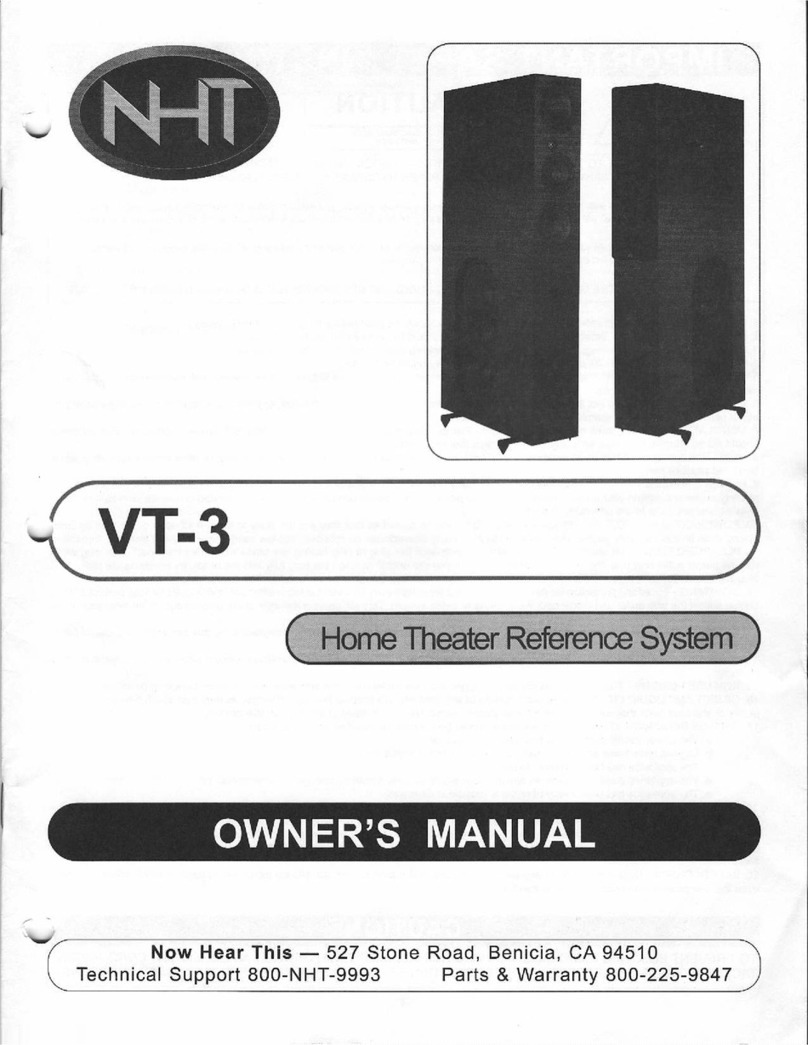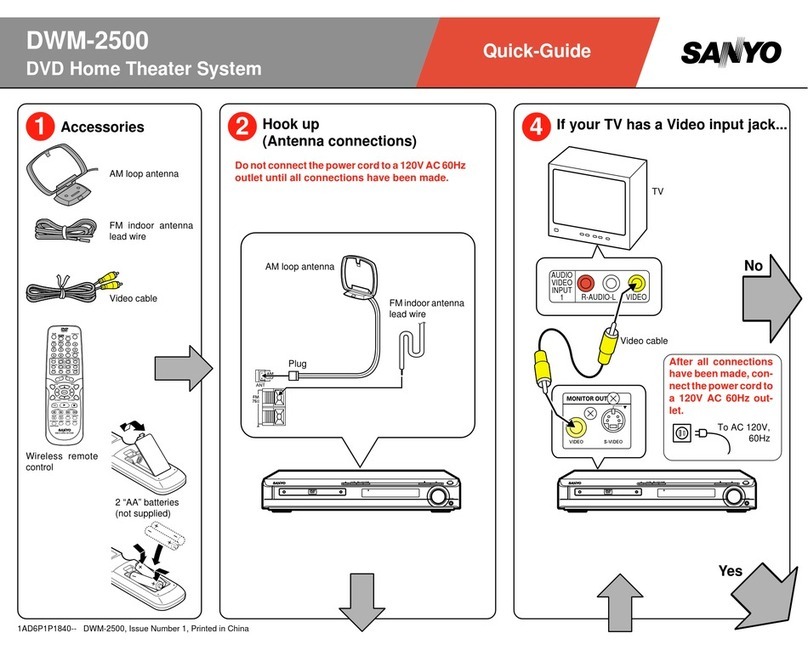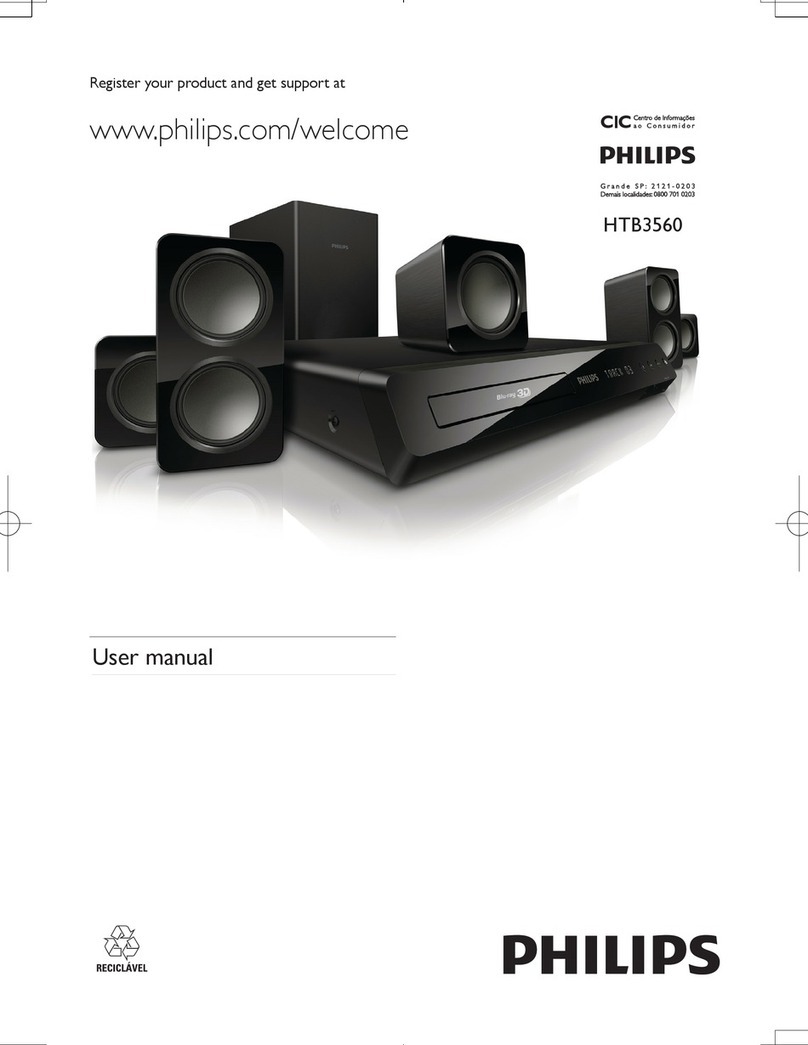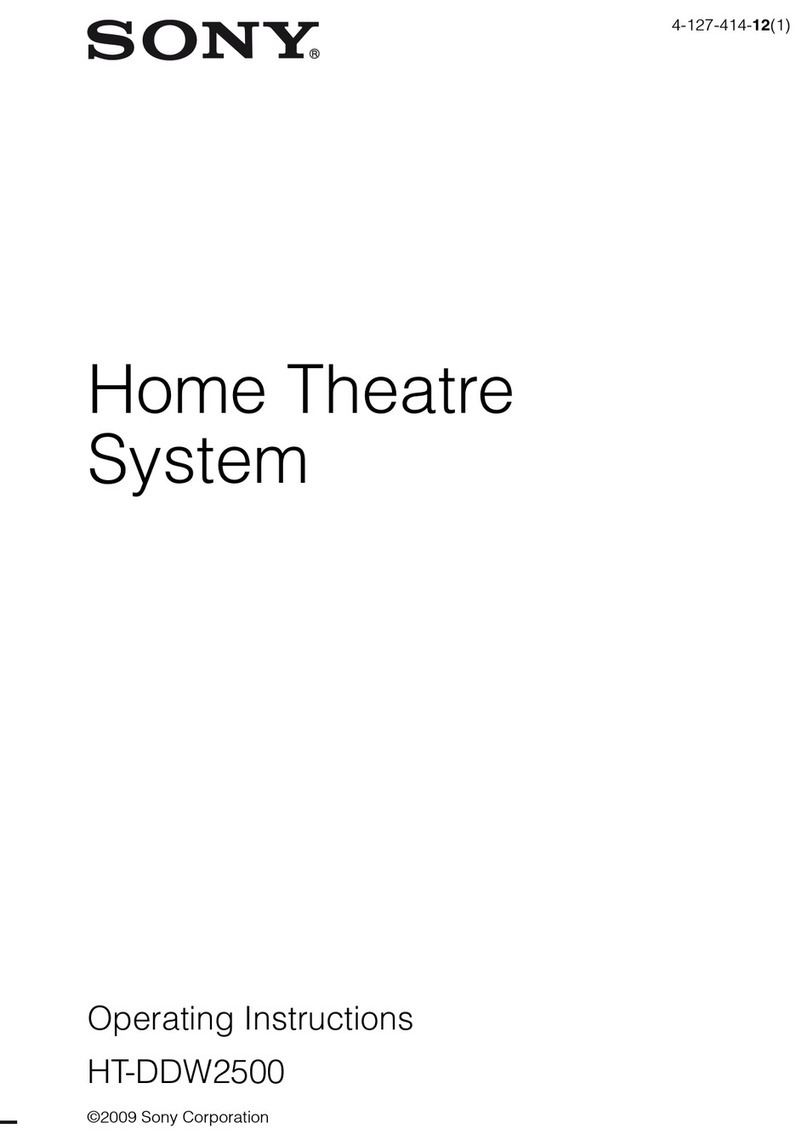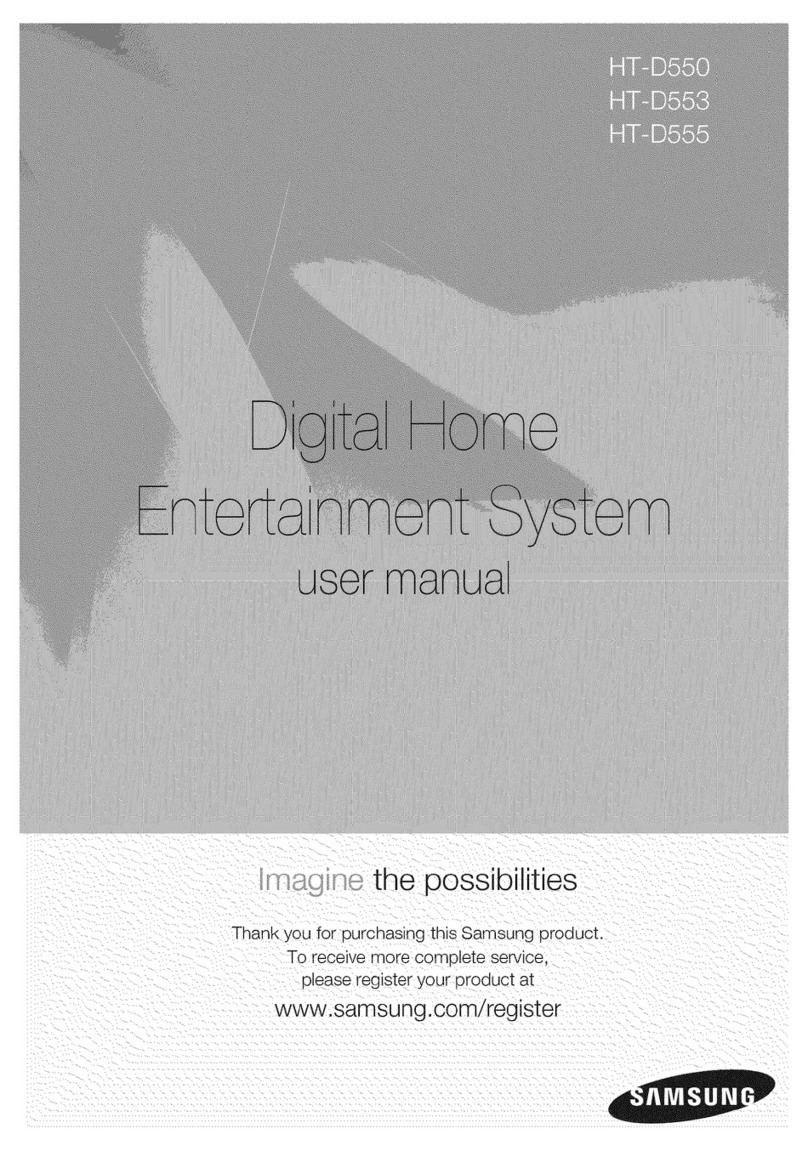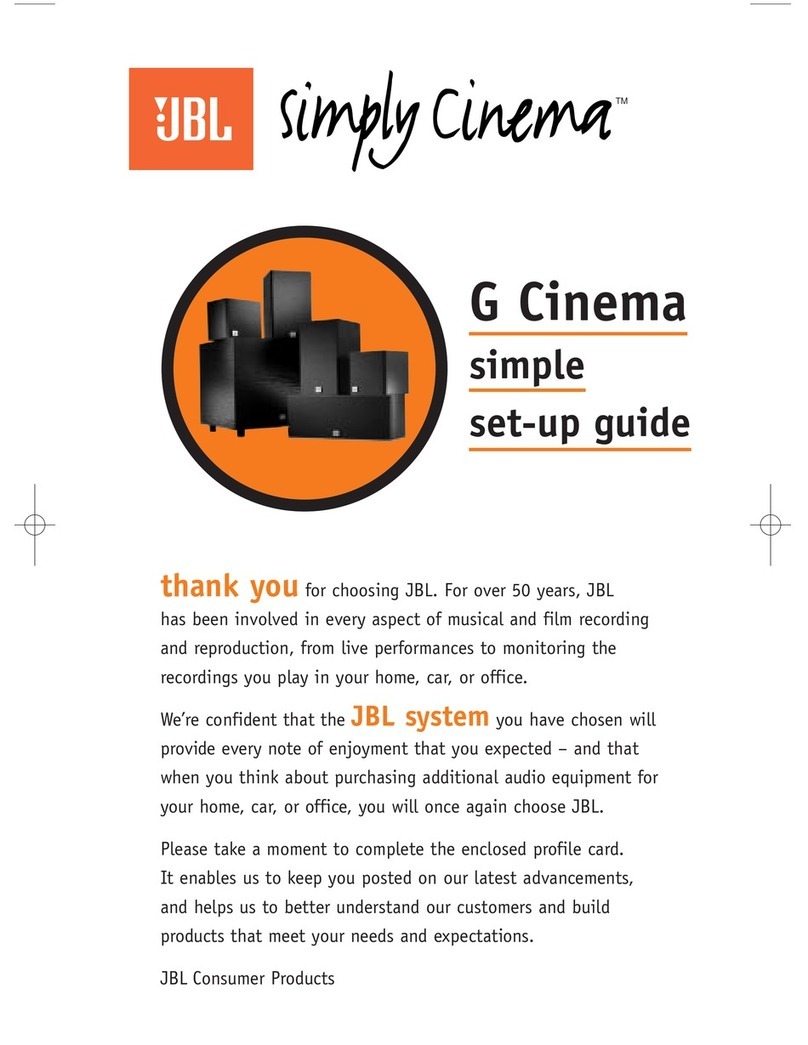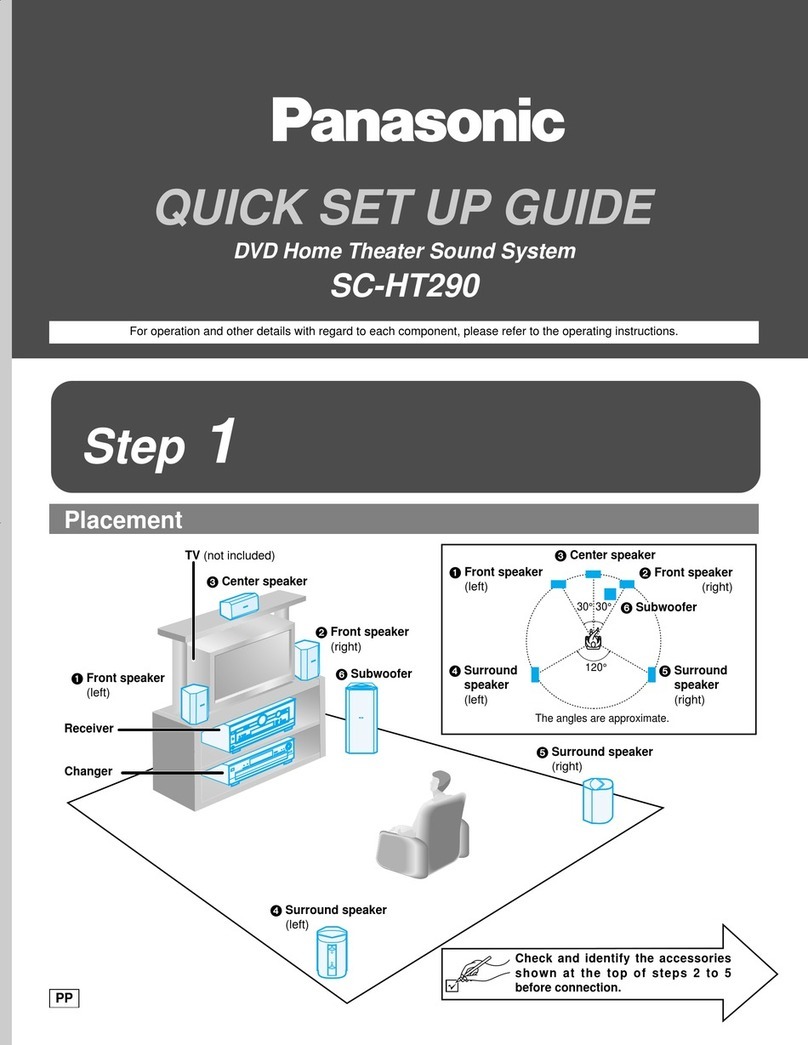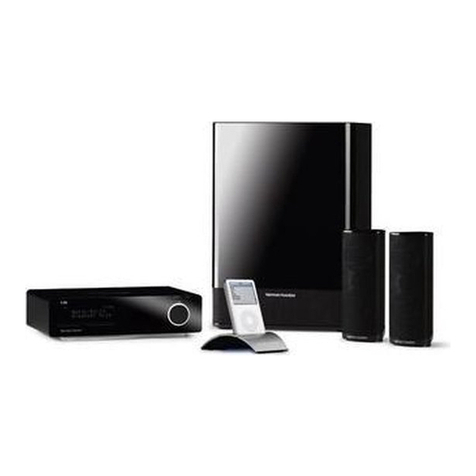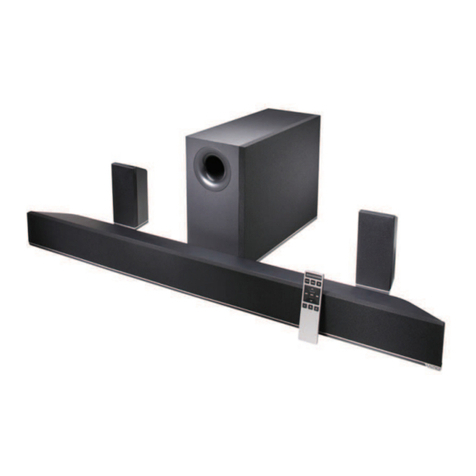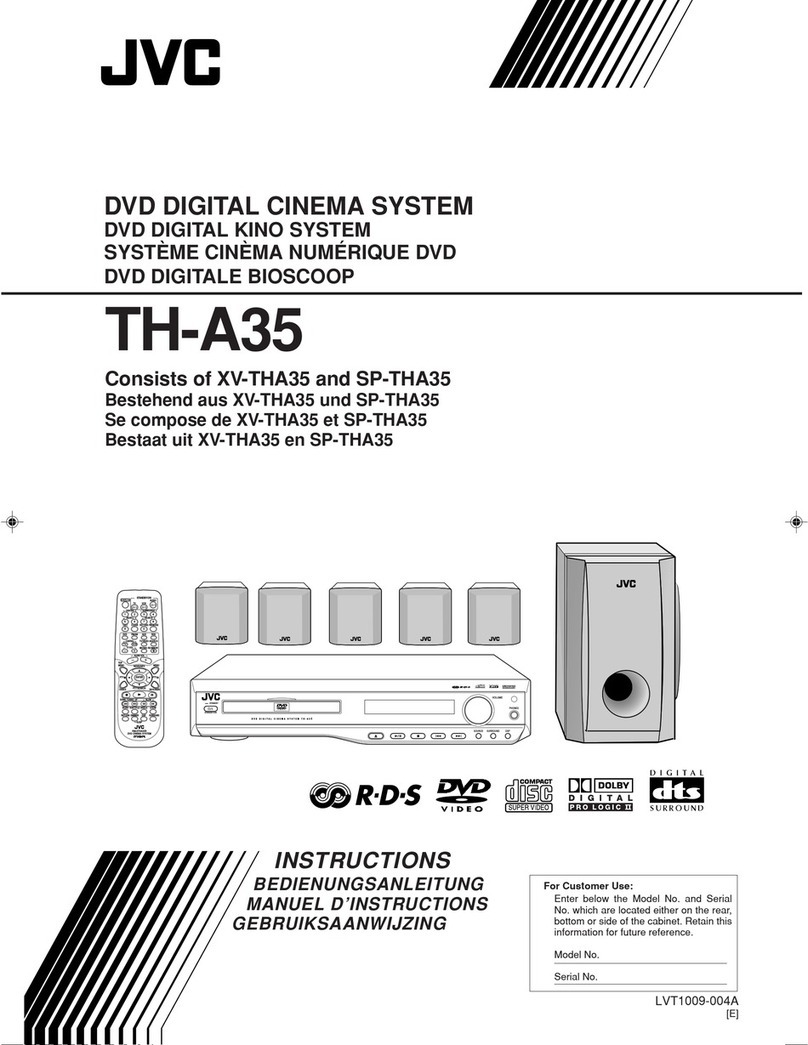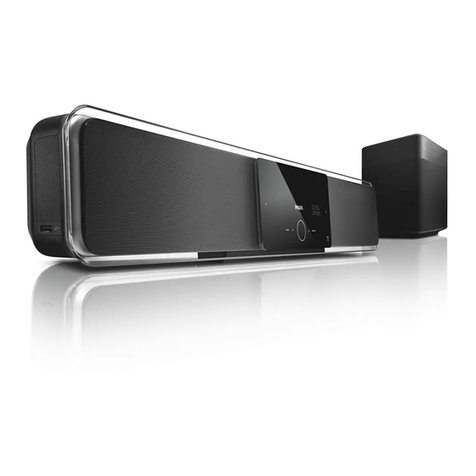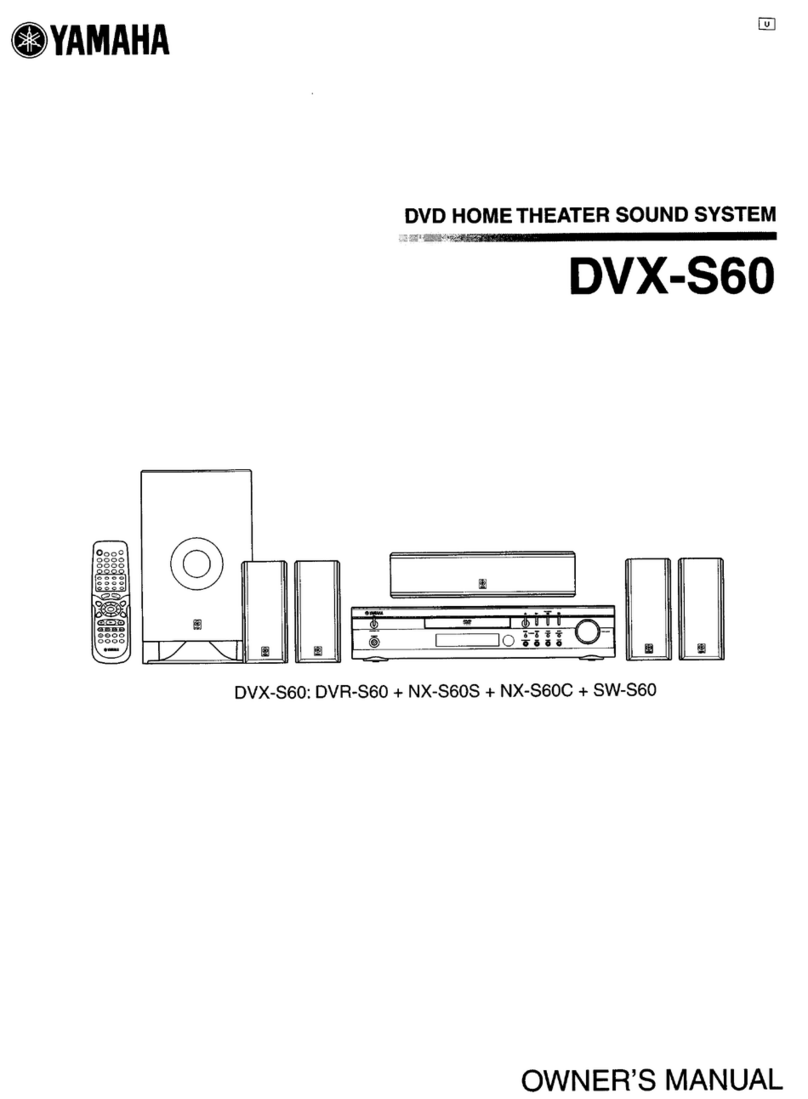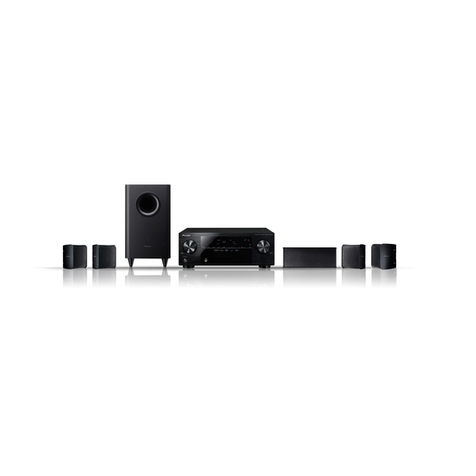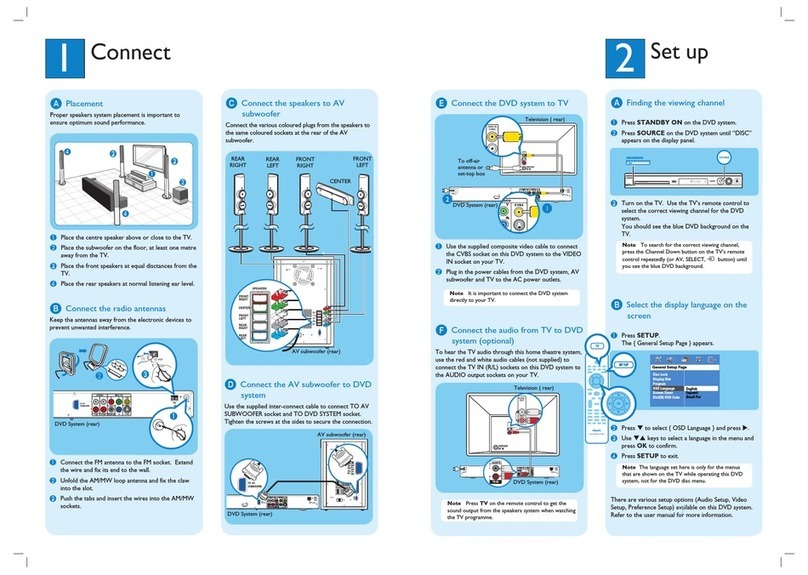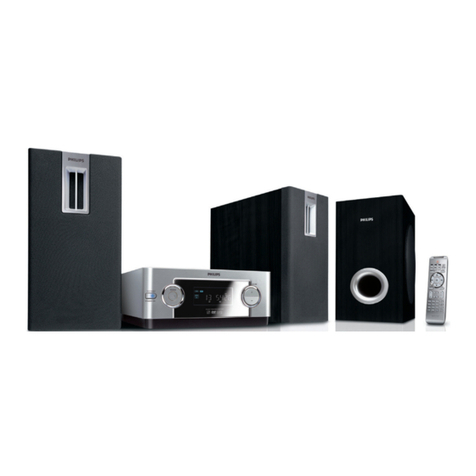NHT Pre/Pro User manual

from the
test bench
Buy a new Corvette, and you
won’t have to study the car zines
to figure out what brand of V-8
you’ll need to install under the
hood. Every Vette comes with
a maxed-out Chevy engine,
transmission, and chassis, so all
of the parts work together in
one finely tuned road machine.
Assembling a home theater
audio system from different
brands’ speakers and electronics
might be a bit more complicated,
but it’s really not that big of a
deal. Even so, the synergies that a
single-brand home theater audio
system can afford are obvious, and
I really think this new, more holis-
tic approach might turn out to be
one of the most promising trends
in consumer electronics. I had my
first glimpse of that future when
Now Hear This (NHT) unveiled
their first integrated electronics
and speaker system, the Xd, in
2005. For that project, NHT joined
forces with DEQX, a leader in dig-
ital speaker-correction techniques,
and PowerPhysics, a top developer
of digital power amplifiers. More
recently,Vinci Labs acquired NHT
and immediately collaborated on
development for the Controller
surround processor and the Power5
and Power2 amplifiers.
NHT’s engineers next rolled out
the Classic Series speakers. I have
to admit, the name initially threw
me off track. I’ve admired NHT’s
speakers for 20-something years,
and the Classics’ sound was anything
but classic NHT.The brand’s “house
sound” was more forward and
tonally lean; the new Classic’s sound
is laid-back, with a fleshier balance.
I don’t know; maybe New Classic
would have been more like it.
I was inspired by NHT’s system
approach, and I couldn’t wait to
get my hands on the Classic Four
system. It has all the new stuff,
including a pair of Classic Four
towers, a Classic Three C center
speaker, a pair of Classic Three
monitors, and the Controller pro-
cessor and Power5 amplifier. It’s a
five-channel system, but you can
readily expand it to six or seven
channels with the addition of the
Power2 stereo amplifier ($1,200),
plus an extra couple of Classic
Cordero Studios
Hearing is believing.
NHT Classic Four Speaker
System, Controller Pre/Pro,
and Power5Amplifier
The NHT system
made Steve want to
crank up the volume
and rock out.
^
Home Theater / April 2007 >www.hometheatermag.com
BY STEVE GUTTENBERG
ELECTRONICALLY REPRINTED FROM APRIL 2007
SPOTLIGHT SYSTEM: Two Reviews in One! $$—$$$

Threes—or maybe the smaller
Classic Twos, Absolute Zeros, or
possibly NHT’s in-wall or in-ceiling
speakers. Did you notice I have
not mentioned a subwoofer? NHT
apparently thinks the Classic Four
system doesn’t need one. I’ve heard
that claim before, but this time it
may be for real.
Look Ma, No Buttons!
The Controller’s front panel is
free of the usual parade of pro-
cessing logos—and there’s not a
single hard button or protruding
knob.The large, easy-to-read LED
display imparts information about
source selection, surround mode,
setup, and so on. To the right,
you’ll find a touch-wheel volume
and navigation control. Six touch-
select buttons frame the display
and provide a variety of functions,
depending on the display’s status.
HDMI 1.1 switching is available
for two sources, and kudos go
out to NHT for being one of the
very few manufacturers commit-
ted to offering an upgrade to
HDMI 1.3 when it’s available.
The built-in AM/FM tuner is a
nice touch that many surround
processors do without.
The Controller has a unique fea-
ture that NHT has dubbed the
Speaker Wizard. It’s in the pre/pro’s
setup menu, and it automatically
provides preset bass management,
equalization, phase settings, and
low- and high-pass crossover filters
for a wide range of NHT speakers.
It will eventually have the soft-
ware to accommodate every NHT
speaker ever made. It’s a remark-
ably comprehensive system, and it’s
wonderfully easy to use. But don’t
for a second think the Controller
and Power5 are so NHT-centric
that you cannot use them with
great success with other brands’
speakers—they’re not.
The Controller’s remote con-
trol took me by surprise; the little
silver and black plastic thing looks
like a refugee from a cheap HTIB.
Its ergonomics aren’t so hot, the
volume and source buttons are
awkwardly placed, and it’s not
backlit. And did I mention that it
feels cheap? I guess NHT assumes
most buyers will ditch it and buy a
programmable remote. I would, but
> L/R Sensitivity:
87 dB from 500 Hz to 2 kHz
> Center Sensitivity:
89.5 dB from 500 Hz to 2 kHz
> Surround Sensitivity:
85.5 dB from 500 Hz to 2 kHz
This graph shows the quasi-anechoic (employing
close-miking of all woofers) frequency response of the
Four L/R (purple trace), Three C center channel (green
trace), and Three surround (red trace). All passive
loudspeakers were measured at a distance of 1 meter
with a 2.83-volt input and scaled for display purposes.
The Four’s listening-window response (a five-
point average of axial and +/–15-degree horizontal
and vertical responses) measures +0.75/–2.67 deci-
bels from 200 hertz to 10 kilohertz. The –3-dB point is
at 42 Hz, and the –6-dB point is at 35 Hz. Impedance
reaches a minimum of 5.24 ohms at 145 Hz and a
phase angle of –69.50 degrees at 61 Hz.
The Three C’s listening-window response measures
+0.96/–1.98 dB from 200 Hz to 10 kHz. An average of
axial and +/–15-degree horizontal responses measures
+1.26/–1.86 dB from 200 Hz to 10 kHz. The –3-dB point
is at 76 Hz, and the –6-dB point is at 63 Hz. Impedance
reaches a minimum of 4.57 ohms at 14.8 kHz and a
phase angle of –42.20 degrees at 92 Hz.
The Three’s listening-window response measures
+1.05/–3.68 dB from 200 Hz to 10 kHz. The –3-dB point
is at 69 Hz, and the –6-dB point is at 55 Hz. Impedance
reaches a minimum of 4.77 ohms at 143 Hz and a
phase angle of –48.61 degrees at 76 Hz.—MJP
C
NHT CLASSIC FOUR SPEAKER SYSTEM
AT A GLANCE
HT Labs Measures: NHT Classic Four Speaker System
SPEAKER: CLASSIC THREE C CLASSIC THREE
Type: Three-way, center Three-way, monitor
Tweeter (size in inches, type): 0.75, aluminum dome 0.75, aluminum dome
Midrange (size in inches, type): 2, aluminum dome 2, aluminum dome
Woofer (size in inches, type): 6.5, aluminum cone (2) 6.5, aluminum cone
Nominal Impedance (ohms): 8 8
Recommended Amp Power: Up to 200 watts Up to 150 watts
Available Finishes: Black Gloss, Special Dark Black Gloss, Special Dark
Dimensions (H x W x D, inches): 7 x 21.875 x 8.25 13.75 x 7.5 x 10.375
Weight (pounds): 23 17
Price: $600/each $400/each
>SPEAKER: CLASSIC FOUR
Type: Four-way, tower
Tweeter (size in inches, type): 0.75, aluminum dome
Midrange (size in inches, type): 2, aluminum dome
Woofer (size in inches, type): 6.5, aluminum cone
Subwoofer (size in inches, type): 10, aluminum cone
Nominal Impedance (ohms): 6
Recommended Amp Power: Up to 250 watts
Available Finishes: Black Gloss, Special Dark
Dimensions (H x W x D, inches): 41 x 7.7 x 16
Weight (pounds): 64.3
Price: $900/each
These listings are based on the manu-
facturer’s stated specs; the HT Labs box
below indicates the gear’s performance
on our test bench.
[
HIGHLIGHTS
Classic Four Speaker System:
Love the new curvy look
Best-ever sound I’ve heard
from NHT
NUVISION NVX32HDU LCD HD MONITR
from the test bench NHT CLASSIC FOUR SPEAKER SYSTEM, CONTROLLER
PRE/PRO, AND POWER5 AMPLIFIER

a 6.5-inch woofer, and a side-
mounted 10-inch subwoofer.The
Classic Three monitor is a three-
way design that utilizes the Classic
Four’s top three driver configura-
tion, and the Three C is a three-
way center with similar drivers,
but it has two 6.5-inch woofers.
The drivers all have aluminum
diaphragms, by the way,
and are new NHT designs.
You rarely see this sort of
dual-dome (tweeter and
midrange) arrangement
anymore. Most midrange
drivers are cone shaped
and paired with dome
tweeters. Based on what
I heard, the dual-dome
approach works wonders
for imaging precision.
The Classic cabinets
feel rock solid; wrap your
knuckles on these brutes,
and all you’ll get are sore
fingers.The top section’s
curves flare back, minimiz-
ing image-smearing dif-
fraction effects. Naturally,
it’s a shame I feel that I’d have to.
The matching Power5 is a Class
D (switching) amplifier with a
relatively compact and lightweight
design. It incorporates the latest
Bang & Olufsen ICEpower amp-
lifier modules, which have been
used in a number of pricey, high-end
amplifiers.This five-times-200-watt
amp never got hot or even slightly
warm during my use.
In addition to the Speaker Wizard,
the Controller has an auto speaker-
setup program, but I used the
manual setup. I noticed that, as
the test tones were playing over
the speakers, the Classics’ timbre
matching was near perfect. A lot
of brands claim their speakers are
timbre matched, but, in
actuality, they’re not.The
Fours,Threes, and Three
C sounded remarkably
similar. My biggest oper-
ational complaint was
that, whenever I skipped
chapters on a DVD, the
Controller’s sound cut
in and out for a frac-
tion of a second before
continuing.
The Controller and
Power5 communicate
via the NHTBus cable,
so, for example, when
you’re listening in
stereo, the amp auto-
matically shuts down
the unused channels.
Modern Classics
The Classics’ beauti-
fully chiseled shape looks
expensive.When I started
the review, I hadn’t yet
learned the system’s prices
and thought the Fours
went for about $2,500 per
pair, but they’re $1,800.
And, when you figure in
the Fours’ deep-bass capa-
bilities and the possible
elimination of the need for
a subwoofer, $1,800 starts
to look like an incredible
deal.The Classic Four is a
four-way design with a
0.75-inch dome tweeter,
a 2-inch dome midrange,
[
HIGHLIGHTS
Controller Pre/Pro and Power5
Amplifier:
Communicate with each other
Amp uses high-end modules
94 93 93 95 93
General information
Classic Four Loudspeaker, $900/each; Classic Three C Center-Channel Speaker, $600; Classic Three Bookshelf Speaker, $400/each
NHT, (800) NHT-9993, www.nhthifi.com >Dealer Locator Code NHT
The most impressive aspect of
NHT’s new Classic designs is
that they’re such well-rounded
products. They excel in every
category: build quality, value,
features, and performance.
> Incredibly solid
medium-density-
fiberboard cabinets
> Flawless paint finish
adds a high-end sheen
> Build quality is com-
parable with speakers
that sell for double and
even triple the price
> The Classic Four is a
lot of speaker for the
money
> The aluminum dome
midrange and tweeter
drivers are so cool
> The Classic Three is a
three-way design, and
that’s a rare distinction
among compact monitor
speakers
> The Classic Four has
bass; you might not
need a subwoofer
> The speakers have
excellent model-to-
model timbre matching
and superb, three-
dimensional imaging
>You can use the Three
C center speaker’s adjust-
able rear foot to angle
the speaker down if it’s
placed atop a TV
> Eliminating the sub-
woofer might provide
needed space
NHT CLASSIC FOUR SPEAKER SYSTEM OVERALL RATING
Build Quality Value Features Performance Ergonomics
94
94
Steve was disap-
pointed that a great pro-
duct like the Controller
comes with a user-
unfriendly remote.
^
Samsung HL-S6188W
DLP HDTV, $3,300
Resolution: 1,920 by 1,080 (1080p)
Best Video Connection: HDMI (2)
Weight: 79.4 pounds
JVC HD-61FN97 D-ILA
HDTV, $2,900
Resolution: 1,920 by 1,080 (1080p)
Best Video Connection: HDMI (2)
Weight: 97 pounds
NEED A DISPLAY?
We recommend the fol-
lowing displays for use
with this NHT system:
Screen images courtesty of 20th Century Fox
NUVISION
NHT CLASSIC FOUR SPEAKER
SYSTEM, CONTROLLER PRE/PRO,

as with just about every NHT
speaker I’ve ever seen, the Classics
are available with a high-gloss black
finish. However, my samples were
decked out in what NHT calls
Special Dark, a reddish-brown,
chocolaty hue. I’d definitely go for
that finish in my room.
The room-shaking abilities of
the Classic Four’s 10-inch woofer
appeared to extend well into the
mid-30-hertz range in my large
home theater. I’d recommend
starting out subwooferless, and
then, if you want a little extra
kick, biamp the Classic Fours
with NHT’s X1 crossover ($350)
and A1 outboard amp ($400). If
that’s still not enough shake and
quake, pick up a Classic Ten or
Classic Twelve subwoofer ($600
and $850 each, respectively).
Obviously, if you’re planning to
assemble a system with the
smaller Classics, you’ll definitely
need one of the subs.
Hear This
As I said, NHT’s “house sound” has
changed from what I remember in
the past.At first, the treble seemed
a trifle reticent. But it’s all there,
even if reduced in level a bit, and
it’s exquisitely refined.The Classics’
dynamics are similarly easygoing,
with no strain or compression.Want
to crank Aerosmith loud enough to
make your ears threaten to bleed?
No problemo. The Classics love
volume the way a Dodge Viper
SRT10 loves speed. And I’ll admit
it: Playing music at near realistic
volume is a real kick. That’s rarely
possible with smaller speakers, but,
when I get to play with the big
guys, it’s tons of fun.
The imaging is spectacular in its
scope and room-filling dimensions;
the Classic speakers’ image height,
width, and depth approach what
I’ve heard from the better electro-
static and flat-panel speakers. But
electrostatics can’t generally deliver
the Classic Fours’ dynamics and
room-shaking bass. Their broad
tonal palette is on par with some
speakers that sell for more than
double the Fours’ price.
On the other hand, I’m not so
sure about the Speaker Wizard’s
effect on the sound. I listened both
with and without it over the course
of a day, and my impression was
that theWizard’s cooler tonal bal-
ance goosed the Classics’ detail;
but, to my ears, it was too much of
a good thing.That said, in a differ-
ent room or acoustic setting, the
Speaker Wizard might be the cat’s
meow. Try it; you may like it.
I’ve been into horror movies
lately, and I keep coming back to The
Ring, the first and arguably the best
of the two installments. It’s super
creepy and chock-full of unsettling
noises and the sound of bubbling liq-
uids. But it’s the scene on the ferry-
boat that literally makes me jump
up from my couch. Naomi Watts
approaches a fellow passenger’s
horse, and the animal goes flat-
out berserk, breaks out of its stall,
gallops around the boat, and jumps
> Analog frequency response in Stereo96
mode:
–0.14 dB at 10 Hz; –0.04 dB at 20 Hz
–0.23 dB at 20 kHz; –21.00 dB at 50 kHz
> Analog frequency response with signal
processing:
–0.14 dB at 10 Hz; –0.05 dB at 20 Hz
–0.22 dB at 20 kHz; –53.40 dB at 50 kHz
This chart shows the frequency response of the left
(aqua), center (green), LFE (purple), and left sur-
round (red) channels at the preamp outputs of the
Dolby Digital decoder. The left channel measures
–0.02 dB at 20 Hz and –0.12 dB at 20 kHz. The center
channel measures –0.03 dB at 20 Hz and 0.04 dB
at 20 kHz, and the left surround channel measures
–0.03 dB at 20 Hz and 0.04 dB at 20 kHz. The LFE
channel, normalized to the level at 40 Hz, is 0.01 dB
at 20 Hz, reaches the upper –3-dB point at 118 Hz,
and reaches the upper –6-dB point at 121 Hz.
Response from the multichannel input to the
main output measures –0.90 dB at 10 Hz, –0.33 dB
at 20 Hz, –0.15 dB at 20 kHz, and –1.01 dB at 50 kHz.
The analog THD+N is less than 0.041 percent at 1 kHz
with a 100-millivolt input and the volume control set
to 2. Crosstalk with a 100-mV input was –83.08 dB
left to right and –82.65 dB right to left. The signal-to-
noise ratio with a 100-mV input from 10 Hz to 24 kHz
with “A” weighting was –116.33 dBrA.—MJP
NHT CONTROLLER PRE/PRO
AT A GLANCE
HT Labs Measures: NHT Controller Pre/Pro
> FEATURES
Processing Modes: Dolby: Digital 5.1, EX, Pro Logic
II,
Pro Logic IIx
DTS: DTS, ES, Neo:6, 96/24
THX Certification: No
Audio D/A Converter: 24-bit/192-kilohertz
Dimensions
(H x W x D, inches): 5.75 x 17.25 x 17
Weight (pounds): 27
These listings are based on the man-
ufacturer’s stated specs; the HT Labs
box below indicates the gear’s perfor-
mance on our test bench.
> CONNECTIONS
Inputs:
Video: HDMI (3), component video ( 3),
S-video (4), composite video (6)
Audio: Coaxial digital (3), optical digital
(3), 7.1-channel analog (1), stereo
analog (6)
Outputs:
Video: HDMI (1), component video (1),
S-video (2), composite video (2)
Audio: Optical digital (2), stereo analog
(2), 7.1 preamp (1)
Additional: NHTBus (1), RS-232 (1), 12-volt
trigger (3), IR jack (2)
NUVISION NVX32HDU LCD HD MONITR
from the test bench NHT CLASSIC FOUR SPEAKER SYSTEM, CONTROLLER
PRE/PRO, AND POWER5 AMPLIFIER

NUVISION NVX32HDU LCD HD MONITR
from the test bench NHT CLASSIC FOUR SPEAKER SYSTEM, CONTROLLER
PRE/PRO, AND POWER5 AMPLIFIER
overboard.Yikes!The Classic Four’s
low bass was deep enough to com-
municate the unbridled horsepower
of the scene.The NHT ensemble’s
visceral sound is just plain scarier
than any sub/sat system I’m familiar
with could ever hope to muster.
The remastered DVD-Audio disc
of David Crosby’s If I Could Only
Remember My Name is a trip to the
outer fringes of hippiedom, circa
1971. Supported by a slew of
fellow travelers from the Grateful
Dead and Jefferson Airplane,
Crosby made a perfect musical
time capsule. The surround mix
knocked me out, but, even in stereo,
the sound possessed a flesh-and-
blood natural quality.
The Pixies Acoustic:Live in Newport
DVD’s unplugged vibe is a nice
contrast to the band’s usual electric
edge.The warm blend of guitars
and Kim Deal’s bass guitar sounded
sweet, and, now that I can hear
every word in Frank Black’s twisted
lyrics, they’re even weirder than I
had thought.The Classics’ sound
kept surprising me, especially when
I played my reference discs, stuff
I’ve heard on what seems like a
billion systems. My respect for
LucindaWilliams’ Live @ the Fillmore
CD kicked up another notch.
There was something about the
yearning in her voice that really
touched me.The low-level detail-
ing and the ability to hear the
concert-hall acoustics were extra-
ordinary.Yeah, the system’s powers
of persuasion were clearly work-
ing their magic.
Just to convince myself that the
sound wasn’t just a magical synergy
between the NHT speakers and the
electronics, I hooked up a $1,500
A/V receiver to the Classics, and
their sound still shone through. It
was very sweet, big, and powerful
but nowhere as transparent, and the
bass definition loosened up a
smidgen. Still, it’s hardly a fair com-
parison—a $4,750 surround-
processor/power-amp combination
should sound a whole lot better than
a $1,500 receiver. I guess it all comes
back to the maxim that the whole is
greater than the sum of its parts,
and, in this case, the parts are plenty
outstanding on their own.The Clas-
sic Four system takes it to another
level.
> All channels driven continuously into 8-ohm
loads:
0.1% distortion at 257.1 watts
1% distortion at 299.1 watts
> Frequency response:
–0.29 dB at 10 Hz; –0.09 dB at 20 Hz
–0.27 dB at 20 kHz; +0.68 dB at 50 kHz
This graph shows that the Power5’s left amplifier
channel, with two channels driving 8-ohm loads,
reaches 0.1 percent distortion at 291.6 watts and
1 percent distortion at 349.5 watts. Into 4 ohms,
the amplifier reaches 0.1 percent distortion at
538.9 watts and 1 percent distortion at 640.2 watts.
An input level of 117.0 mV was required to produce
an output of 2.83 volts into an 8-ohm load, indi-
cating an overall gain of 27.59 dB.
Crosstalk at 1 kHz driving 2.83 volts into
an 8-ohm load was –109.0 dB left to right and
–106.78 dB right to left.—MJP
NHT POWER5 AMPLIFIER
AT A GLANCE
HT Labs Measures: NHT Power5 Amplifier
> FEATURES
Number of Channels: 5
Power Rating (watts
per channel): 200, into 8 ohms
Frequency Response: 3 dB from 20 Hz
to 20 kHz
Dimensions
(H x W x D, inches): 5.75 x 17.25 x 17
Weight (pounds): 37
Price: $2,000
> CONNECTIONS
Inputs: RCA (5)
Outputs: Five-way binding posts (5 pair)
Additional: NHTBus, IR in and out,
12-volt trigger in and out
These listings are based on the manufacturer’s stated
specs; the HT Labs box below indicates the gear’s per-
formance on our test bench.
95 95 95 93 87
General information
Controller Pre/Pro, $2,750; Power5 Amplifier, $2,000 >NHT, (800) NHT-9993, www.nhthifi.com >Dealer Locator Code NHT
NHT’s new electronics aren’t
merely me-too components.
They look cool, sound wonder-
ful, and offer tremendous value.
> Touch controls for
every function eliminate
all mechanical switches
> The Power5’s ICE-
power digital modules
are used in far more
expensive high-end amps
> The most affordable
touchscreen-controlled
pre/pro I’ve seen
> Most 200-watt-per-
channel amps go for a
lot more dough
> Speaker Wizard pro-
vides proprietary equal-
ization for NHT speakers
> Auto speaker calibra-
tion on tap as well
> Clean, beautifully
balanced sound
> Abundant power
reserves
> Navigating the
Controller’s touch-
screen display can
test your patience
> Awkward remote
ergonomics
NHT CONTROLLER PRE/PRO AND POWER5 AMPLIFIER OVERALL RATING
Build Quality Value Features Performance Ergonomics
94
94
Posted with permission from the April 2007 issue of Home Theater ® www.hometheatermag.com. Copyright 2007, PRIMEDIA Inc. All rights reserved.
For more information about reprints from Home Theater, contact Wright’s Reprints at 877-652-5295
Table of contents
Other NHT Home Theater System manuals
